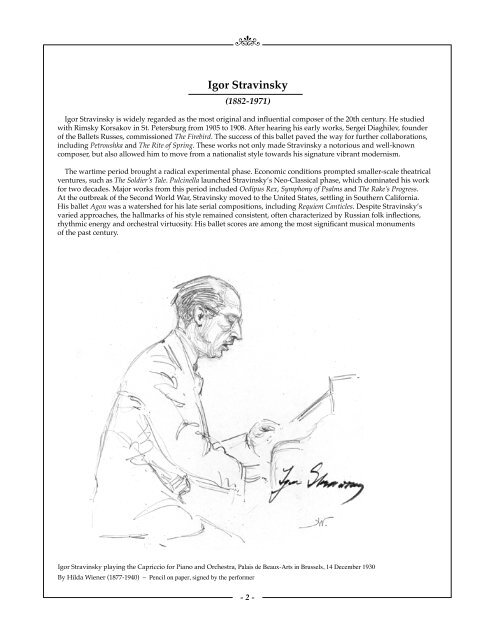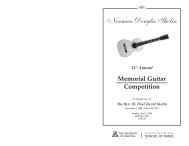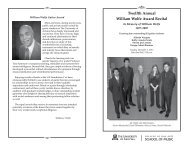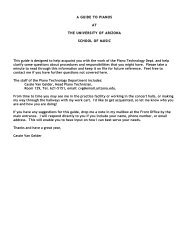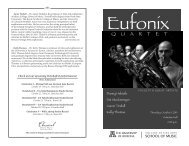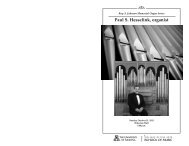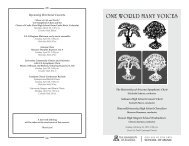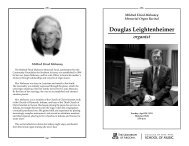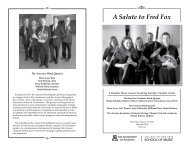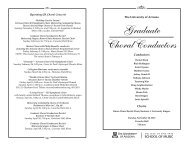Download Event Program - School of Music - University of Arizona
Download Event Program - School of Music - University of Arizona
Download Event Program - School of Music - University of Arizona
You also want an ePaper? Increase the reach of your titles
YUMPU automatically turns print PDFs into web optimized ePapers that Google loves.
nIgor Stravinsky(1882-1971)Igor Stravinsky is widely regarded as the most original and influential composer <strong>of</strong> the 20th century. He studiedwith Rimsky Korsakov in St. Petersburg from 1905 to 1908. After hearing his early works, Sergei Diaghilev, founder<strong>of</strong> the Ballets Russes, commissioned The Firebird. The success <strong>of</strong> this ballet paved the way for further collaborations,including Petroushka and The Rite <strong>of</strong> Spring. These works not only made Stravinsky a notorious and well-knowncomposer, but also allowed him to move from a nationalist style towards his signature vibrant modernism.The wartime period brought a radical experimental phase. Economic conditions prompted smaller-scale theatricalventures, such as The Soldier’s Tale. Pulcinella launched Stravinsky’s Neo-Classical phase, which dominated his workfor two decades. Major works from this period included Oedipus Rex, Symphony <strong>of</strong> Psalms and The Rake’s Progress.At the outbreak <strong>of</strong> the Second World War, Stravinsky moved to the United States, settling in Southern California.His ballet Agon was a watershed for his late serial compositions, including Requiem Canticles. Despite Stravinsky’svaried approaches, the hallmarks <strong>of</strong> his style remained consistent, <strong>of</strong>ten characterized by Russian folk inflections,rhythmic energy and orchestral virtuosity. His ballet scores are among the most significant musical monuments<strong>of</strong> the past century.Igor Stravinsky playing the Capriccio for Piano and Orchestra, Palais de Beaux-Arts in Brussels, 14 December 1930By Hilda Wiener (1877-1940) – Pencil on paper, signed by the performer- 2 -


